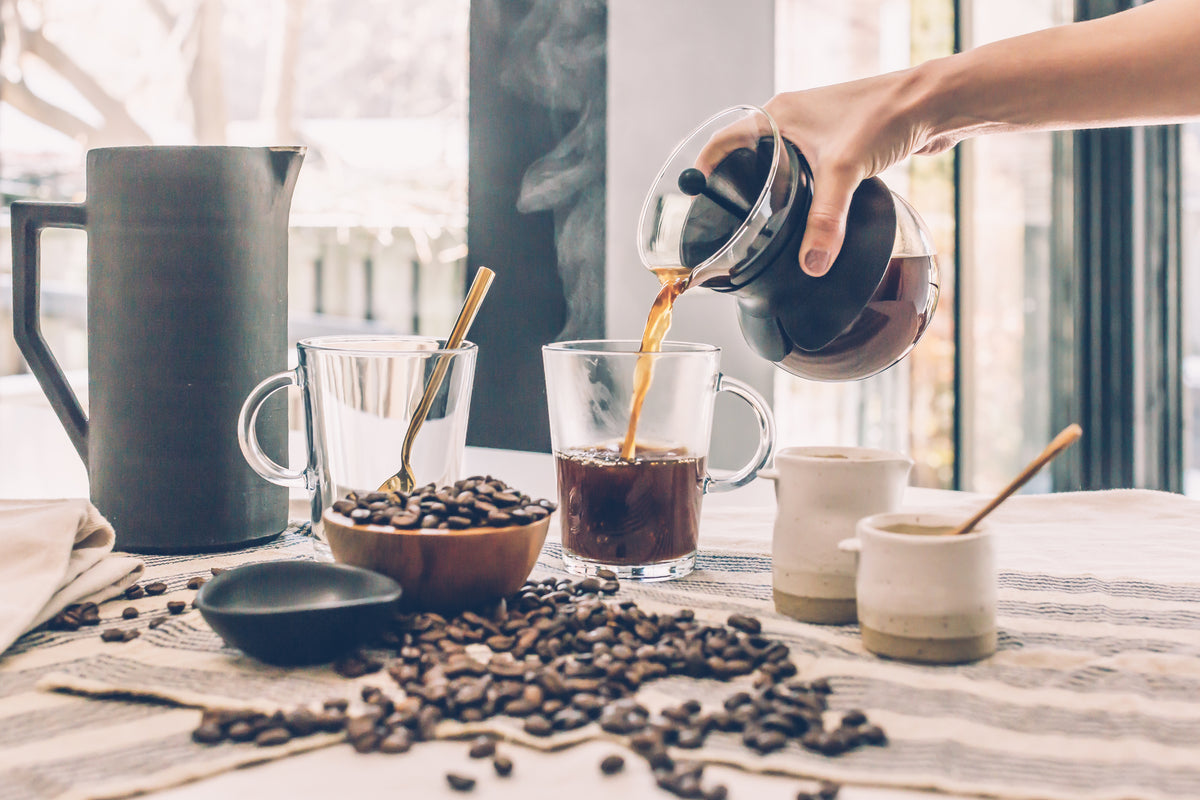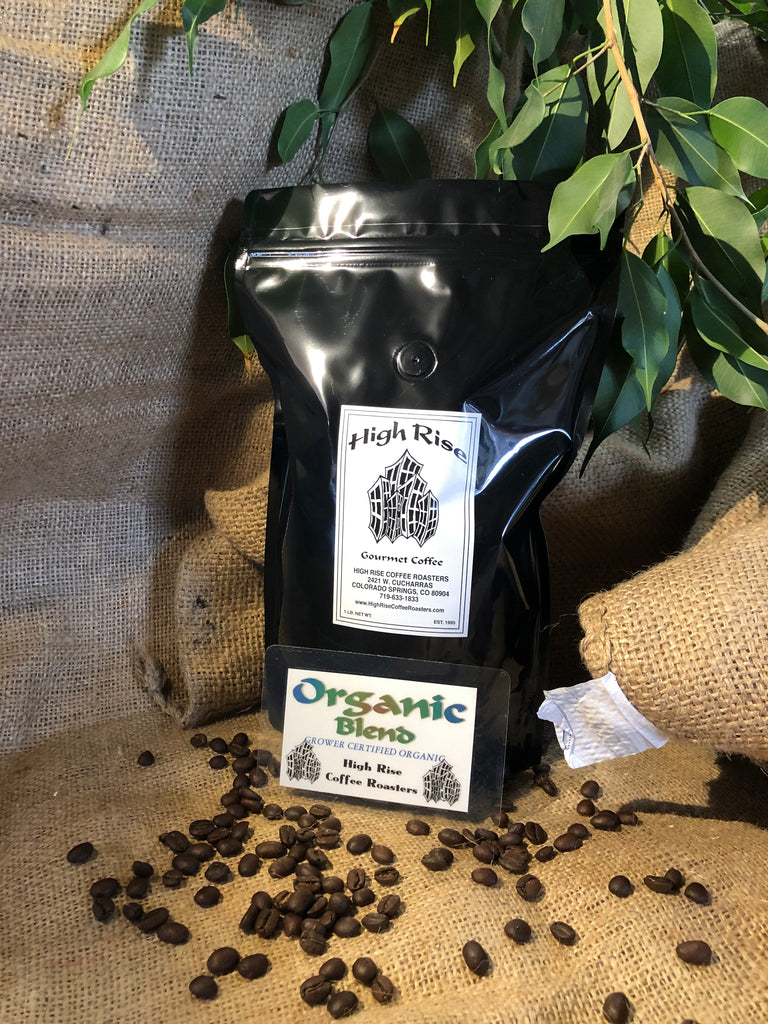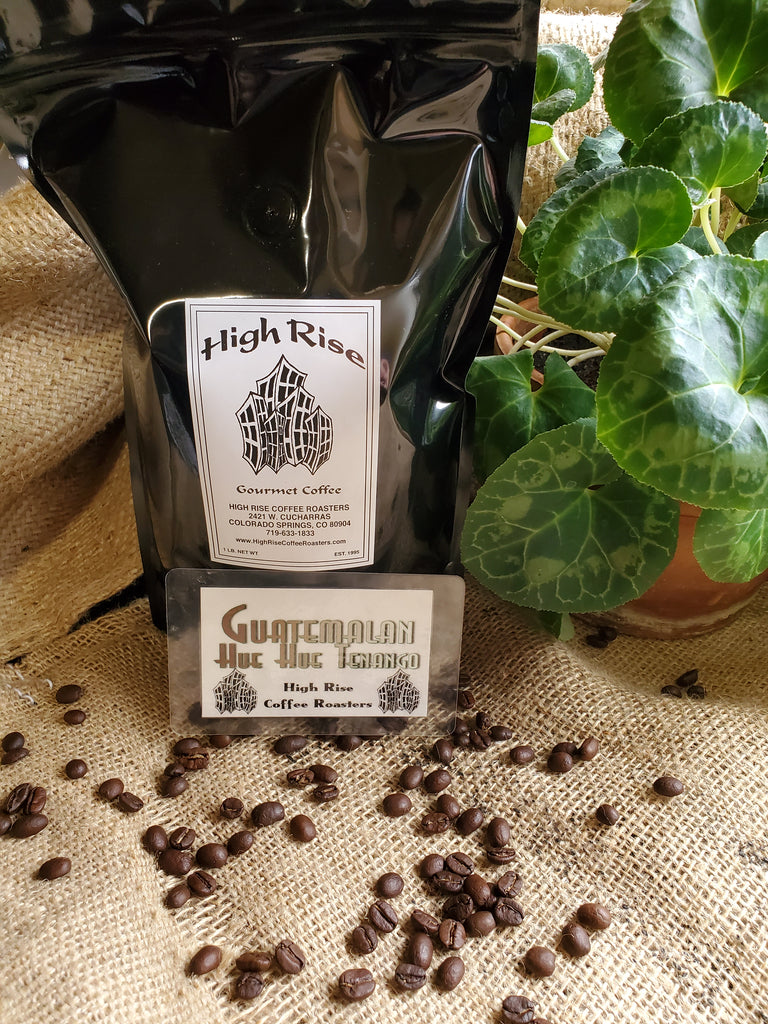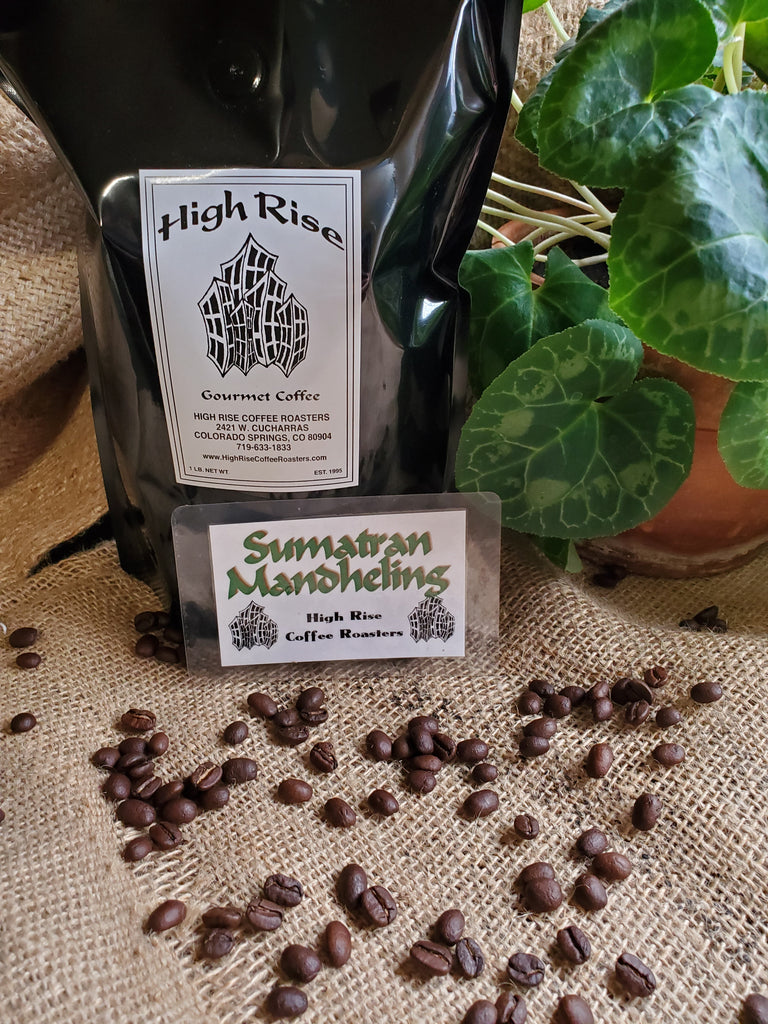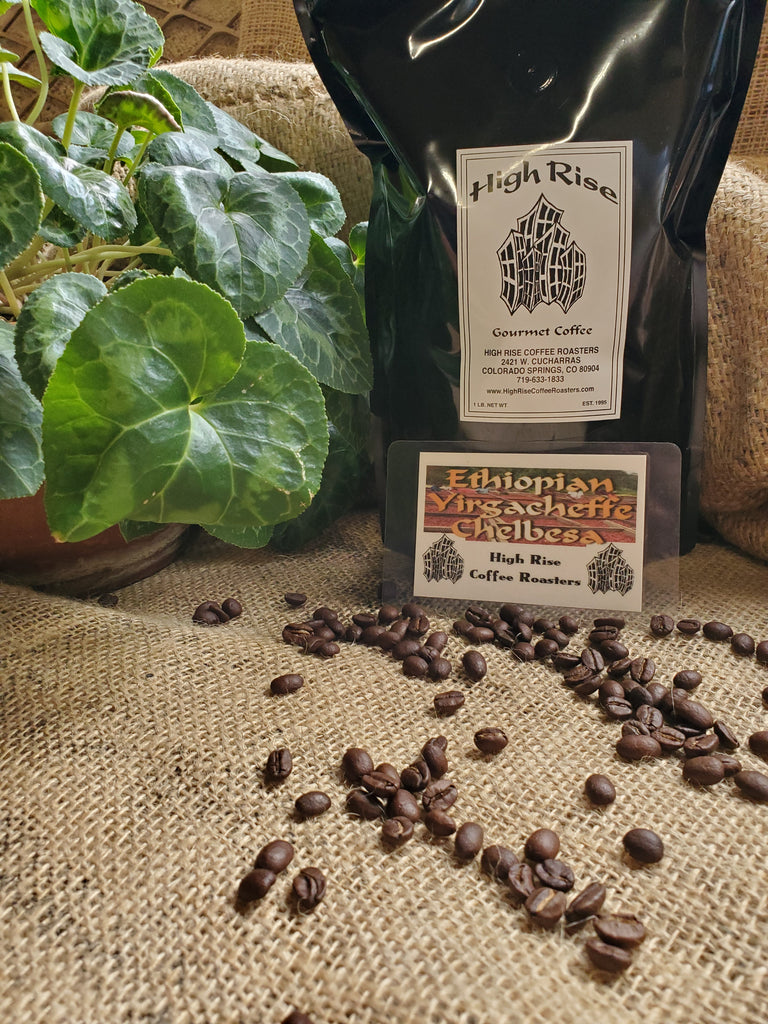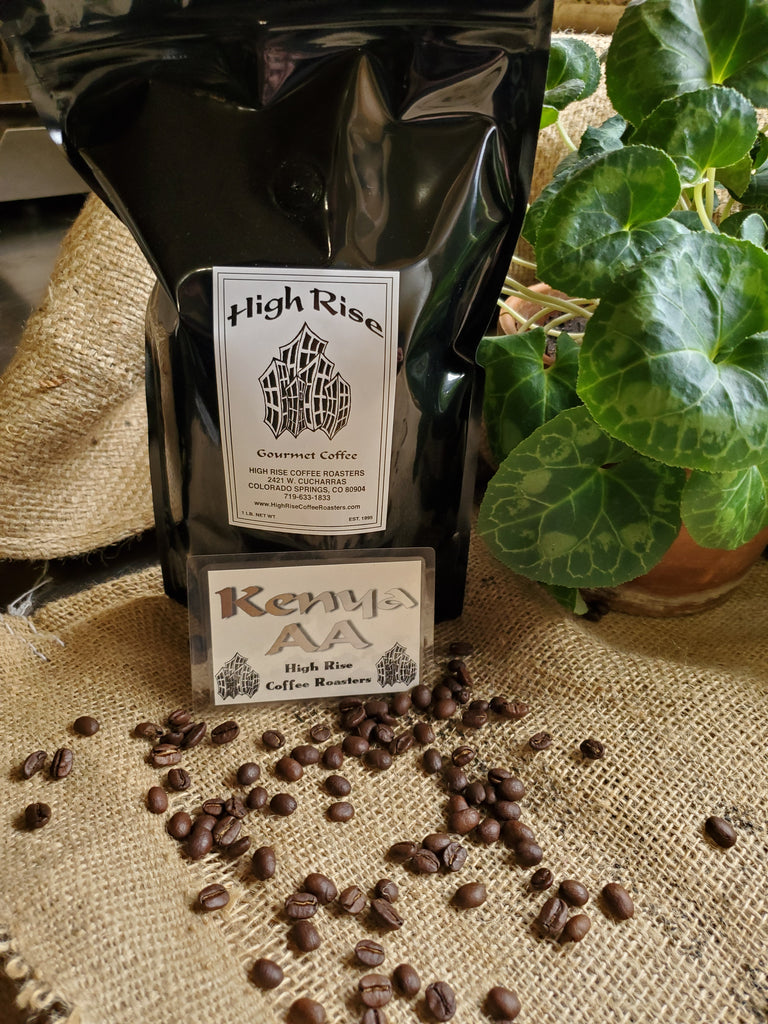Legendary Espresso
Legendary Espresso
High Rise ‘Round the World Four Coffee Sampler
More DetailsCosta Rican Monte Crisol (1Lb. bag)
More DetailsGuatemala Huehuetenango (1Lb. bag)
More DetailsSumatra Mandheling (1lb. bag)
More DetailsEthiopian Yirgacheffe Chelbesa (1Lb. bag)
More DetailsKenya AA (1Lb. bag)
More DetailsCelebese Toraja (Sulawesi) (1Lb. bag)
More DetailsPanama Panamaria (1lb. bag)
More DetailsGrower Certified Organic New Guinea Waka Jawaka 1lb. Bag
More DetailsHONDURAS FAIR TRADE ORGANIC FINCA LIQUIDAMBAR YELLOW HONEY MICRO-LOT
More Details100% Arabica Single Origin Beans
View CollectionHigh Rise's Technique to Market like a pro!
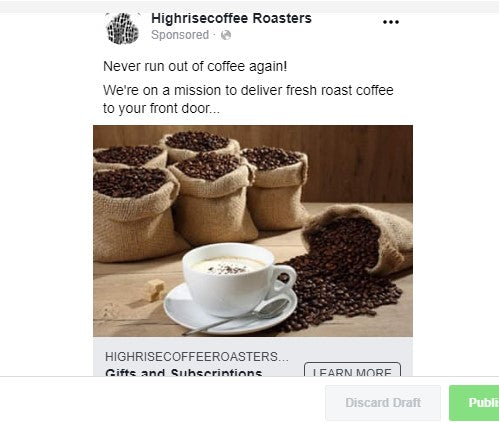
Being a small store, High Rise Coffee Roasters has a very tight budget for marketing and outreach. This means we’ll have to maximize resources to get the best return on High Rise’s marketing dollars. So, let’s get started…. High Rise Coffee Roaster’s focus: Specialty coffees from around the world. High Rise Coffee Roaster’s newest product: 3, 6, 9, or 12 month mail-order coffee subscriptions. This product is geared toward online customers. The goal for this High Rise Coffee Marketing Project: Reach the largest amount of potential customers we can at the lowest possible cost. The pathway to success: Combine Free Google Analytics with Facebook Ads Google Analytics is a valuable –and free- tool we don’t feel gets the attention it deserves. It’s a great way for small business owners to begin to harness the power, and incredible value, of good business intelligence. Among many other features we don’t have time to get into today, Google Analytics allows the web administrator to see how website traffic is being referred[1] to your site (how many site visitors are coming from Facebook, organic searches, email campaigns, etc.?), where visitors are physically located, what content they’re viewing, and other generalities associated with internet behavior of website visitors. Further, when we combine the intelligence gathered from Google Analytics with Facebook’s advertising platform, we can leverage Google’s valuable data to build a customer profile and then market specifically to that customer. Step 1 – Use Google Analytics to get a deeper understanding of High Rise’s current customer-base: We asked: How much traffic is coming to High Rise Coffee’s website, highrisecoffeeroasters.com? The chart below references website traffic for highrisecoffeeroasters.com from Jan. 1st, 2019 through May 20th, 2019 – we recommend exploring and comparing traffic and visitor behaviors from both extended and shortened time periods. High Rise Coffee online is only available to be shipped in the continental US, so we focused only on visitors –and buyers- in the continental United States. This helped us narrow down our ‘target locations’ and focus precious ad dollars… The chart below reveals the majority of High Rise web visitors and purchases come from Colorado, AZ and D.C. Next, we took investigated the general age and gender of High Rise’s website visitors as well as their propensity to purchase products from the highrisecoffeeroasters.com website. … We found 58.6% of High Rise Coffee's online coffee sales are made to men… …and that male website visitors come in all ages: We found the same for female website visitors (see chart below)– However, it appears coffee is not a popular product for purchase by women between the age of 35 and 44. Good to know…. Step 2 –Use Google Analytics to get a deeper understanding of who High Rise Coffees current site visitors are and what they are interested in …This helps us determine ad placement. The chart below reveals many High Rise website visitors –and buyers- are employed in the banking and finance industry or similar business professions, are into keeping good health and maintaining good fitness, like to travel, enjoy cultural activities, etc… We also found many High Rise website visitors and customers are currently planning travel, looking for employment, and/or interested in productivity and financial services. This information will be helpful in defining the target market STEP 3: Open Facebook Ad Manager…Pick your message/image and create your ad: As discussed above, High Rise Coffee Roasters is interested in promoting their monthly coffee subscriptions. They’ve created a Facebook ad complete with a link back to their “subscriptions” page. Below is the Facebook ad constructed by High Rise Coffee Roasters. STEP 4 - Choose your ad placement– based on information gathered from Google Analytics Google Analytics tells us the majority of online High Rise Coffee customers come from the states listed below, so these are the locations we’ve picked to target ads…. High Rise Coffee chose a short duration (3 days) and a very limited budget ($60 total) as shown above. They also chose a very specific target audience -based on analytics- as shown below… It’s important to be creative when choosing your target market in Facebook… We know a lot of online customers are travel buffs; as a result, we’re looking to reach people identified as international travelers, people looking for hotel deals, air travel, resort deals, etc. Step 5 - After the ad has completed its run, review all available analytics for performance indicators Looks like we did pretty well with our targeted marketing. We can use Google Analytics to check our performance, and/or we can cross check our analytics data with the analytics tools built into the website. In High Rise Coffee’s case, we can look at the analytics built into their basic Shopify plan. We’ve discovered that although most small business professionals maintain an online presence through the use of a website and social media, most don’t realize the value of learning the inner structure of their website and social media posts to see whether or not they are accomplishing their purpose. If you’re interested in learning more, please don’t hesitate to reach out. Our contact info is available below: Shannon Anderson 719-630-3348 shannon@compaccesstech.com Resources: https://www.facebook.com/business/ads-guide https://support.google.com/analytics/answer/1008015?hl=en
Read moreHigh Rise's Technique to Market like a pro!

Being a small store, High Rise Coffee Roasters has a very tight budget for marketing and outreac...
Read moreWhat is specialty coffee, anyway?
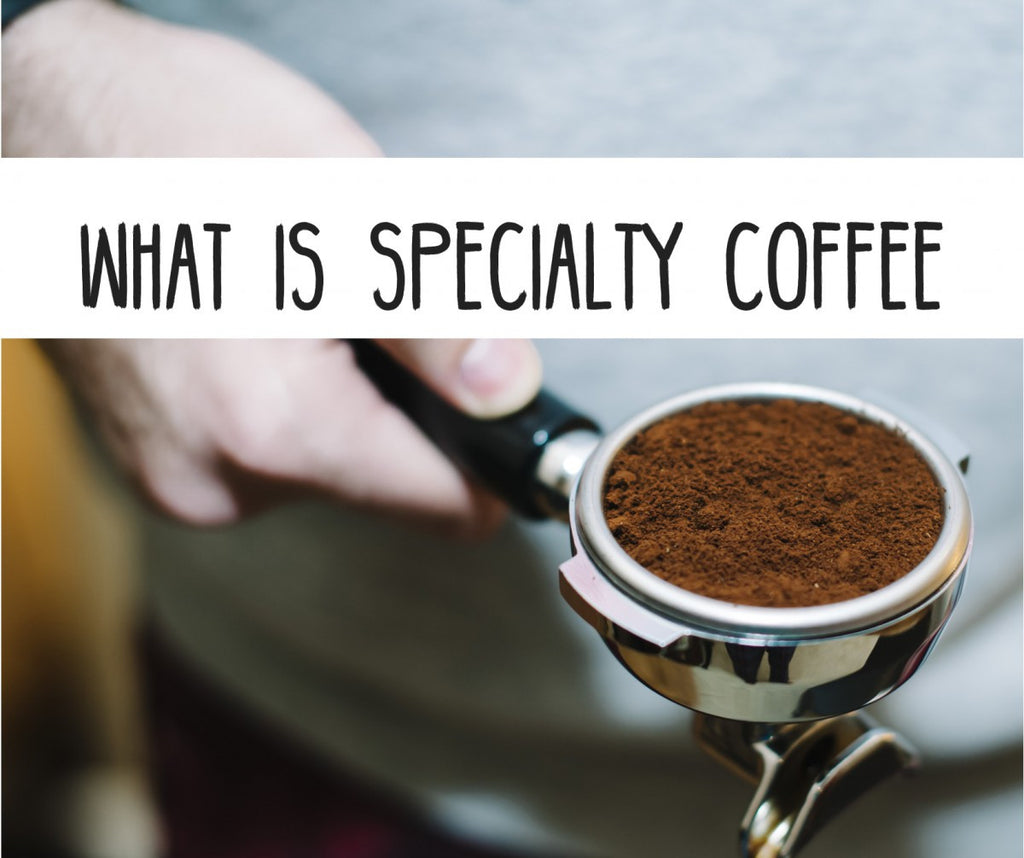
Unlike commercial coffee, which is usually roasted and packaged in large plants, under nationally advertised brand names, specialty coffee is roasted in small batches, using traditional methods. Most often, specialty coffees are sold right where they are roasted. High quality product and hand craft coffee roasting are the hallmark of the small batch specialty roaster. What's the diff? Specialty coffees offer more choice than their commercial counterparts. While commercial coffees only offer a limited blend or roast, specialty coffee proprietors offer consumers the opportunity to buy coffee by place of origin: Kenya, Sumatra, Colombia, Bali, etc. OR by specialty roast: French roast, Italian Roast, full city roast, etc… Non-European sounding names like Flores, Sumatra, Timor refer not to the roast, but to the origin of the bean. A coffee labeled Colombian, for example, should consist entirely of beans from a single crop in a single country, Colombia. For the most part, single origin coffees are roasted about the same length of time, or to what the roaster feels is the optimum roast to bring out the distinctive qualities of each coffee. In our case, you’ll find most of our single origin coffees are roasted medium to full city. In addition to the country of origin, names can also include market names (Yirgacheffe – a growing region in Ethiopia), Grade names (Kenya AA – the ‘AA’ denotes the quality of the bean), and estate names (Chelbesa or HueHue Tenango). I won’t dive down this rabbit hole today, as a full explanation would require two more written pages, at a minimum. For more information, please see William Uker’s All About Coffee; It’s literally everything you ever wanted to know about coffee and more! European sounding names, on the other hand, generally refer to a specialty roast. Italian Roast, for example, has been roasted longer and appears somewhat darker than say, a Vienesse Roast. Specialty roasts are usually blends, which is a mixture of two or more types of single origin beans. In our case, we blend our single origin beans to create a flavor that is more complete –or complex- than the flavor produced by any one single origin bean. Regardless of what you take home from High Rise, whether one of our fab single origins, or an amazing specialty blend, we guarantee it will be fresh. The clock starts the second the beans leave the roaster.
Read moreWhat is specialty coffee, anyway?

Unlike commercial coffee, which is usually roasted and packaged in large plants, under nationally...
Read moreWhy is Jamaica Blue Mountain Coffee SO expensive?

Not all Jamaican coffee is created equal. Many of the coffees found in lowland Jamaica are sold cheaply and are mostly used as fillers in cheap blends. The highland coffees of Jamaica, all grown above 3,000 feet in elevation, on the other hand, rank among some of the world’s most distinguished and highly celebrated coffees, with Jamaica Blue Mountain being the world’s most expensive, and most controversial. Generally, in the coffee growing world, the higher the growing altitude, the harder the bean; the harder the coffee bean, the higher the quality. In regard to Jamaica Blue Mountain coffee, not only are the beans hard, and thus high quality, the high altitude and steep grade of the Blue Mountain growing region make this coffee difficult- and expensive- to harvest. The expense of the harvest, coupled with the high demand for Blue Mountain coffee in both the American and Japanese markets keep the cost of Jamaican Blue Mountain high. Unfortunately, due to it's high retail price, many people, in one way or another have tried to profit from the extraordinary price demanded for Blue Mountain. Today, responsible roasters designate only estate-produced coffees grown at over 3,000 feet, in the Blue Mountain district of Jamaica, as being authentic Blue Mountain coffee. Less admirable retailers will attempt to pass off “Blue Mountain Style” Coffee or “Jamaica Blue Mountain Blends” as THE Jamaica Blue Mountain Coffee. While these coffees may have some of the flavor characteristics of Blue Mountain coffee, they usually contain only a small amount of actual Blue Mountain beans, if any at all. In addition, buyers should be skeptical in regard to coffees labeled Jamaican High Mountain. The High Mountain designation generally describes cheap Jamaican coffees that are grown at lower elevations on other parts of the island. High Mountain is not the same as Blue Mountain. Our Jamaica Blue Mountain Coffee is sourced from family-owned farms located near the Saint Andrew parish, nestled in the Grand Ridge of the Blue Mountains, Jamaica and grown at approx. 3200 ft. in elevation. Coffee produced in the Jamaican Blue Mountains has a protected designation of origin (PDO) because of the renowned reputation of Blue Mountain coffee. Coffee is intercropped with banana, Inga, mango and many other shade trees. The Clydesdale wet-mill is the most modern in Jamaica with technology to recycle and treat water before returning it to the environment. The dry mill, located in an economically underprivileged part of Kingston, employees over 600 women to hand sort coffee. In addition to the social impact from stable employment, funds are also invested in projects to support over 30 schools. Notably, 80% of Jamaican Blue Mountain gets sold into the Japanese market.
Read moreWhy is Jamaica Blue Mountain Coffee SO expensive?

Not all Jamaican coffee is created equal. Many of the coffees found in lowland Jamaica are sold ...
Read moreFair Trade Certification; What it is and how it applies to the coffee industry...
Fair Trade Certified products are food or craft products that have been proven to adhere to strict production standards set by one of two independent labeling organizations, Fair Trade USA or the Institute for Marketecology (IMO). For coffee and cocoa specifically, in addition to prohibiting child labor practices and activities that degrade society and the environment, these certification standards require that the product is grown by small farmers in democratically organized cooperatives. In other words, you can be sure that any product labeled Fair Trade Certified was not produced using child labor or sweatshop conditions, and that the rights of all workers involved in the production process were respected. You can also be sure that the cost of certification was high and required that the producer(s) invest heavily. As a result, many farmers experience only a small increase in profit-if they receive any additional profit at all. In addition, the higher product cost limits local access to the product itself. For our part, we carry many Fair Trade coffees; in many cases, they are some of the best coffees available at market. Additionally, we appreciate that the Fair Trade Standards in place are keeping the farm workers and the environment safe. However, we also recognize that some of the best coffees in the world come from small micro farms that want to remain locally available and/or are unable to afford the costly certification process. At the end of the day, we work hard to ensure that the beans we buy are from coffee farms using sustainable and fair work practices. We don't want to miss out on a good coffee simply because the farmer can't afford the FT certification. We do not directly seek out FT beans, nor do we charge more for the FT products we do sell just because they are Fair Trade certified. Our sole mission is to provide high quality, ethically sourced beans, roast them to perfection and deliver them to your door fresh. For more information on Fair Trade practices and Fair Trade Certification, please refer to the following articles: http://www.darwinsmoney.com/fair-trade-criticism/ file:///C:/Users/API/Downloads/ruben_fort_-_world_development.pdf
Read moreFair Trade Certification; What it is and how it applies to the coffee industry...
Fair Trade Certified products are food or craft products that have been proven to adhere to stric...
Read more